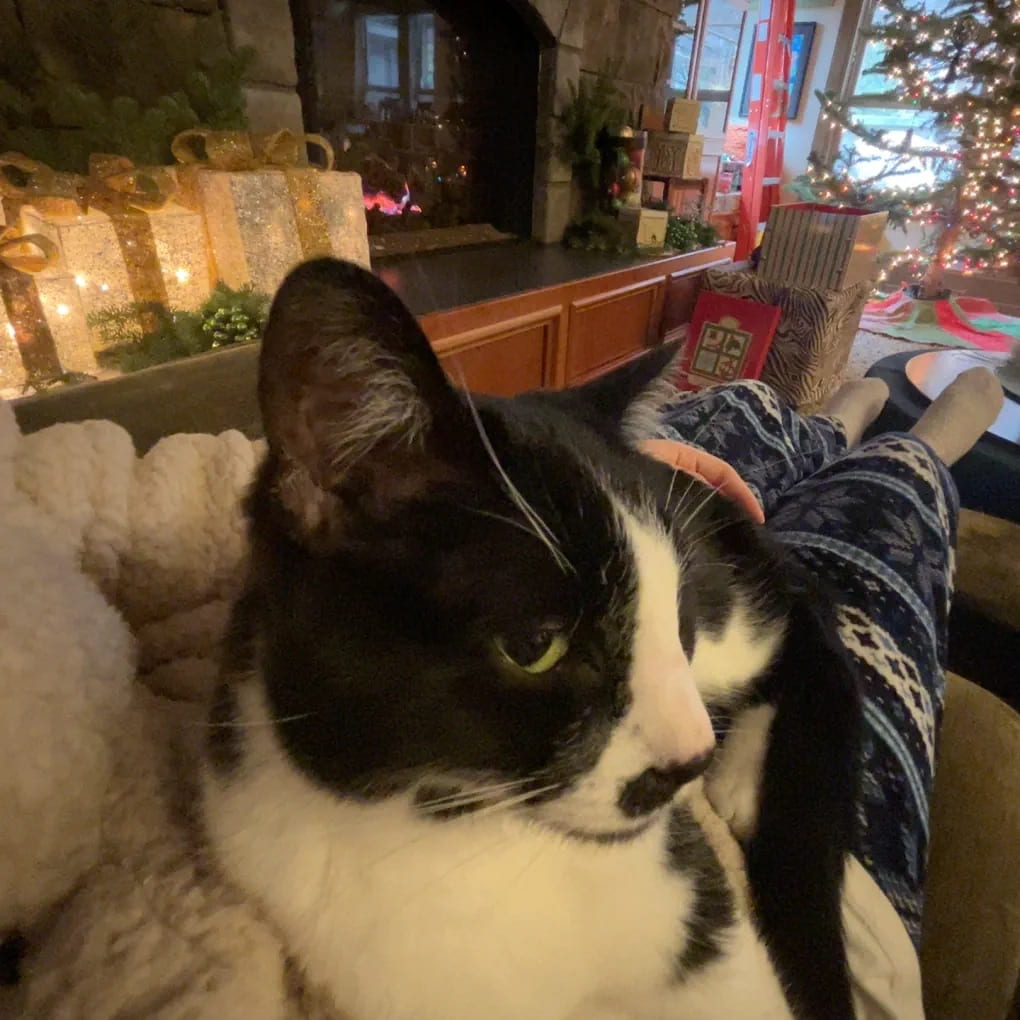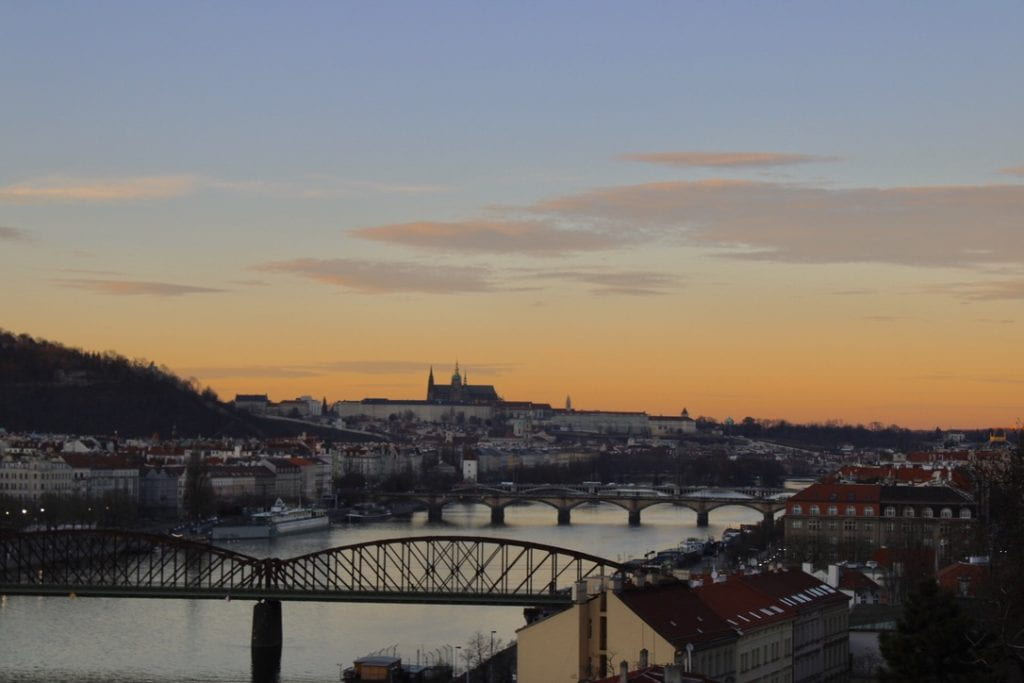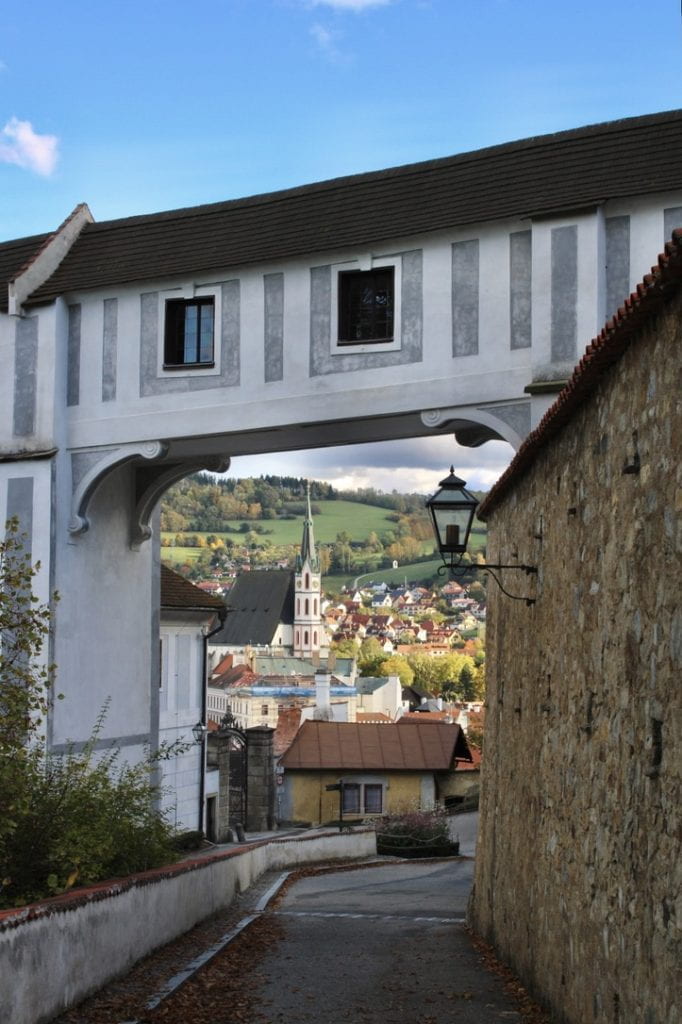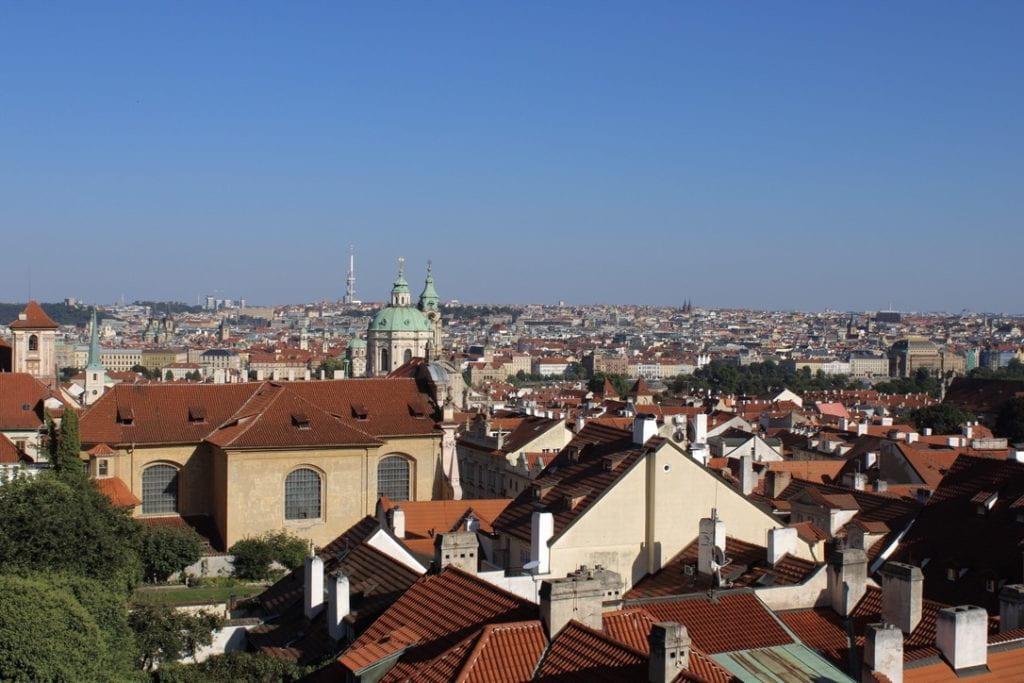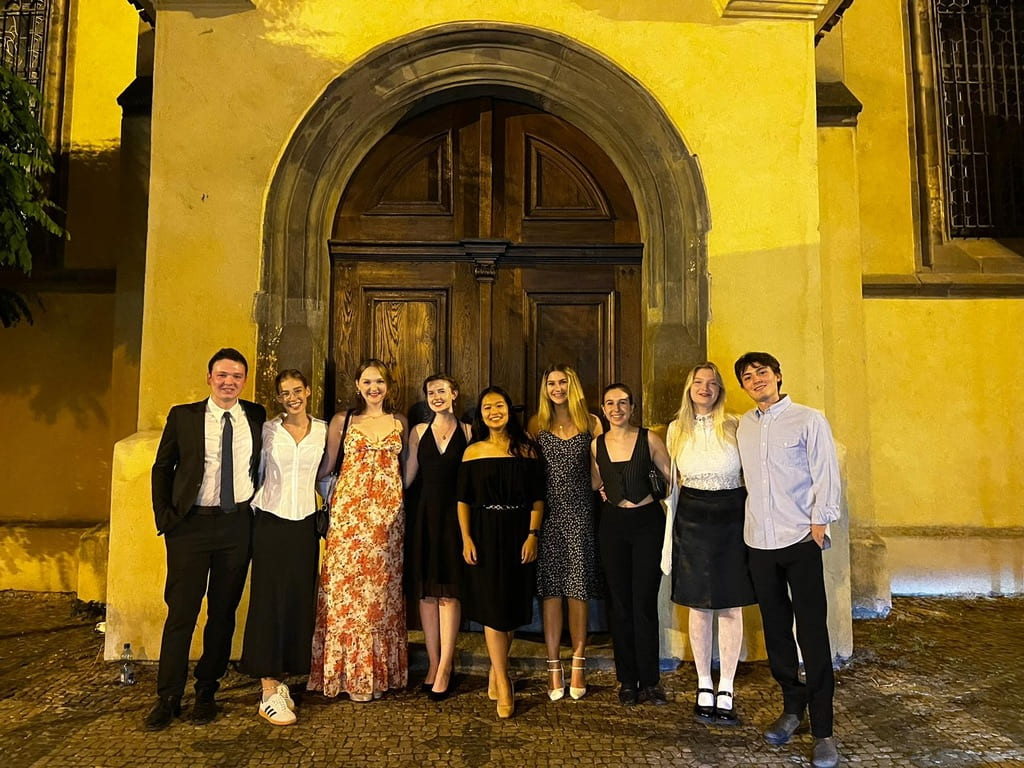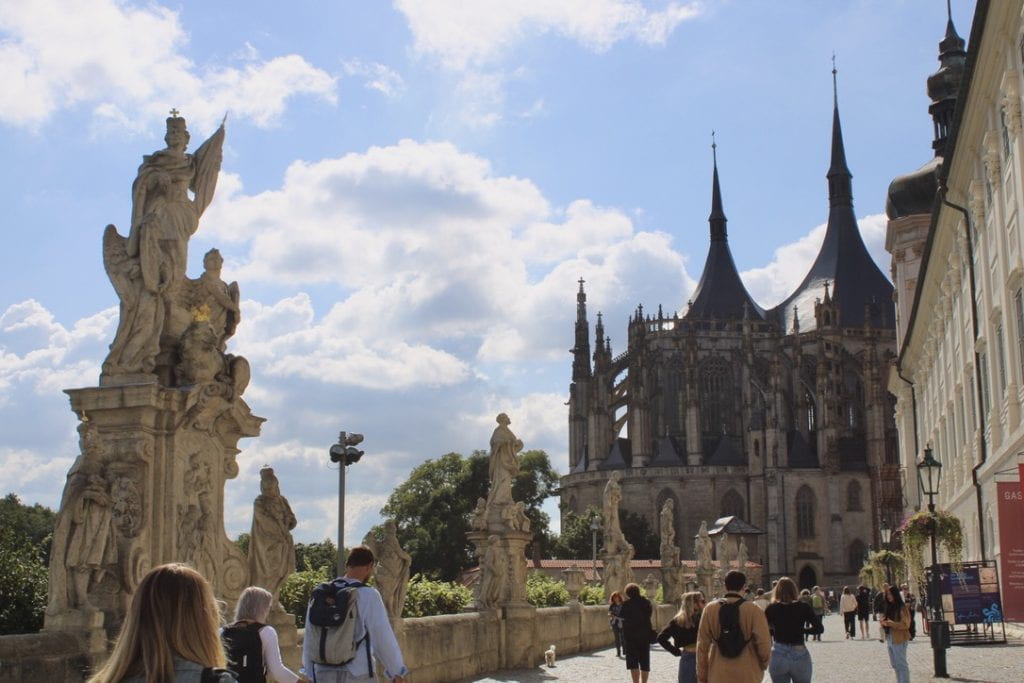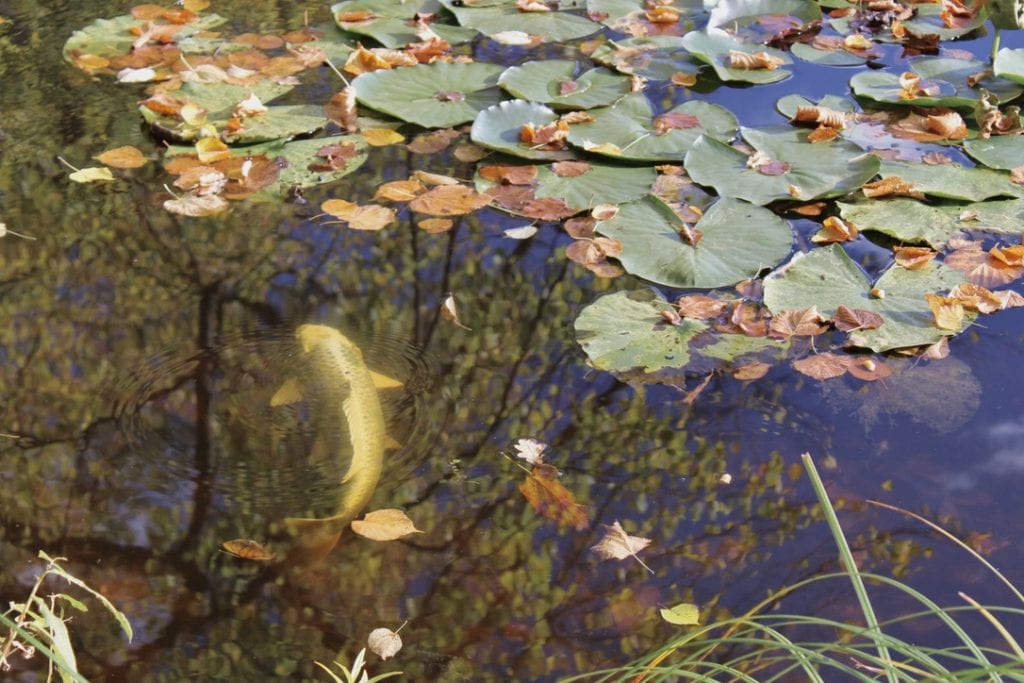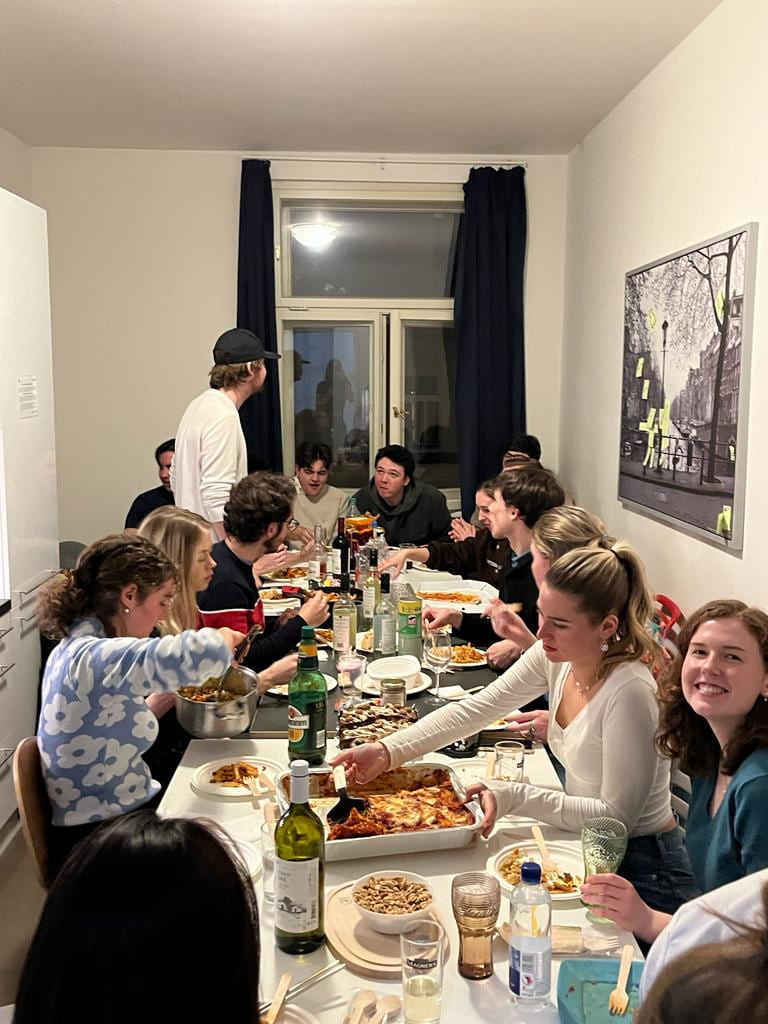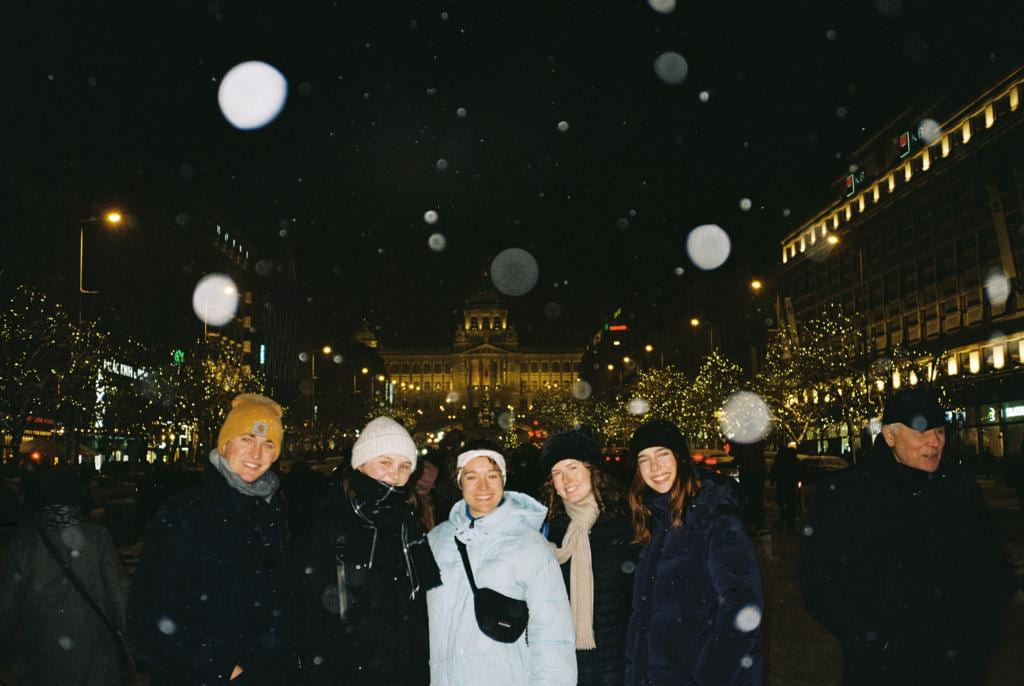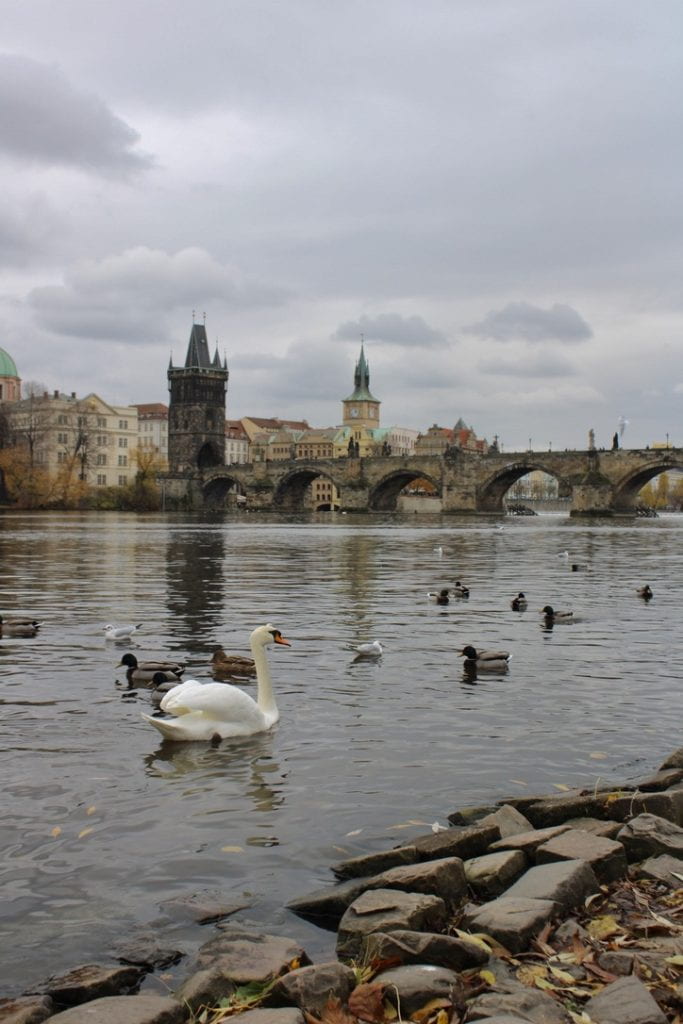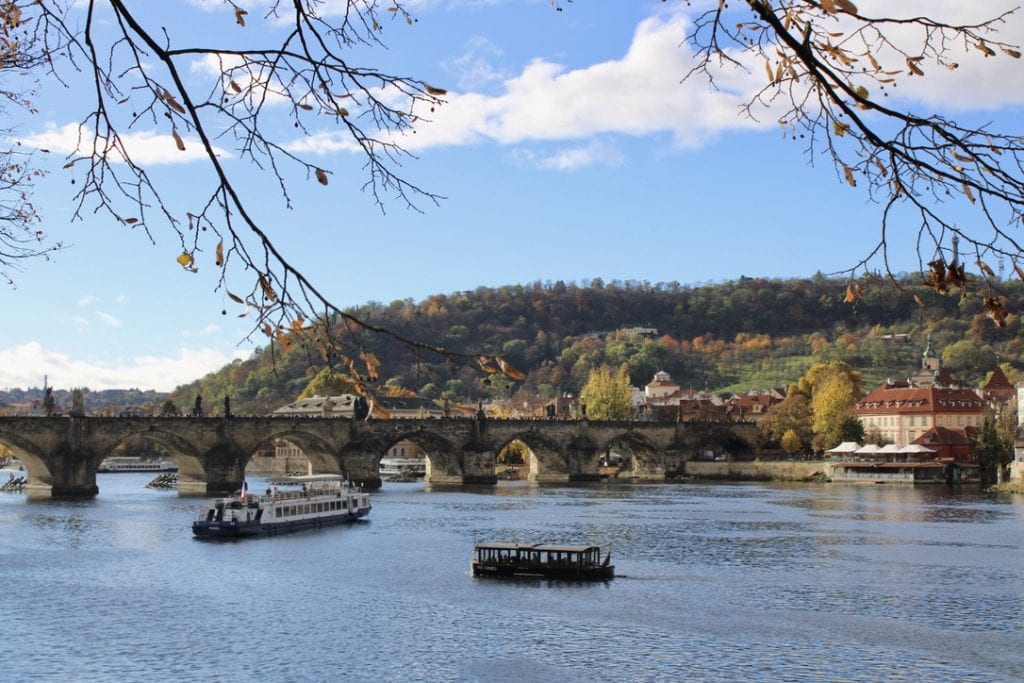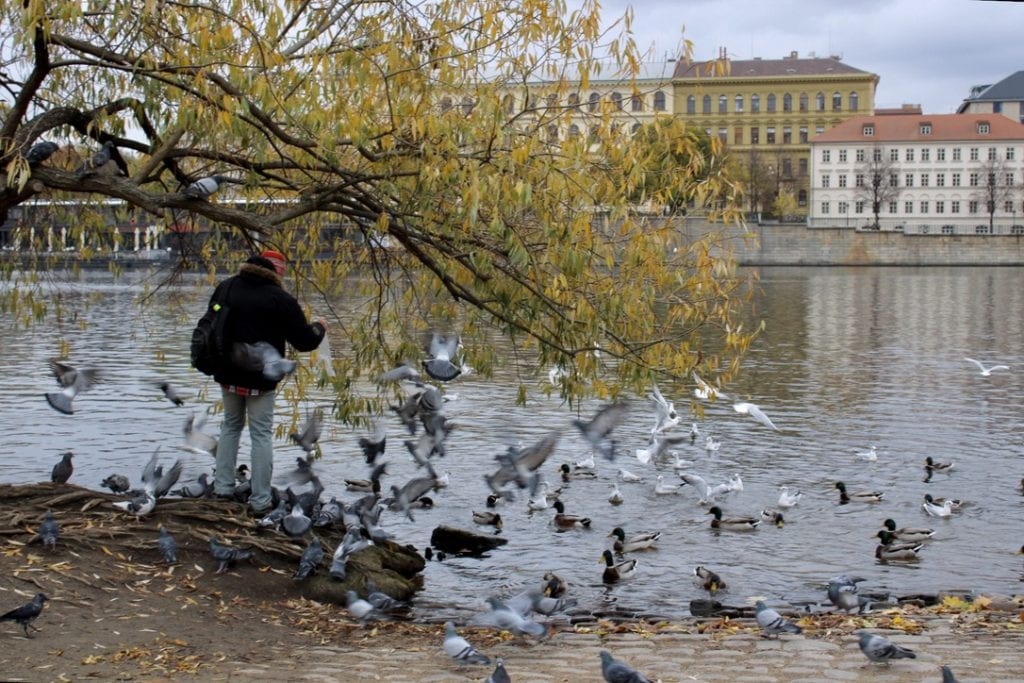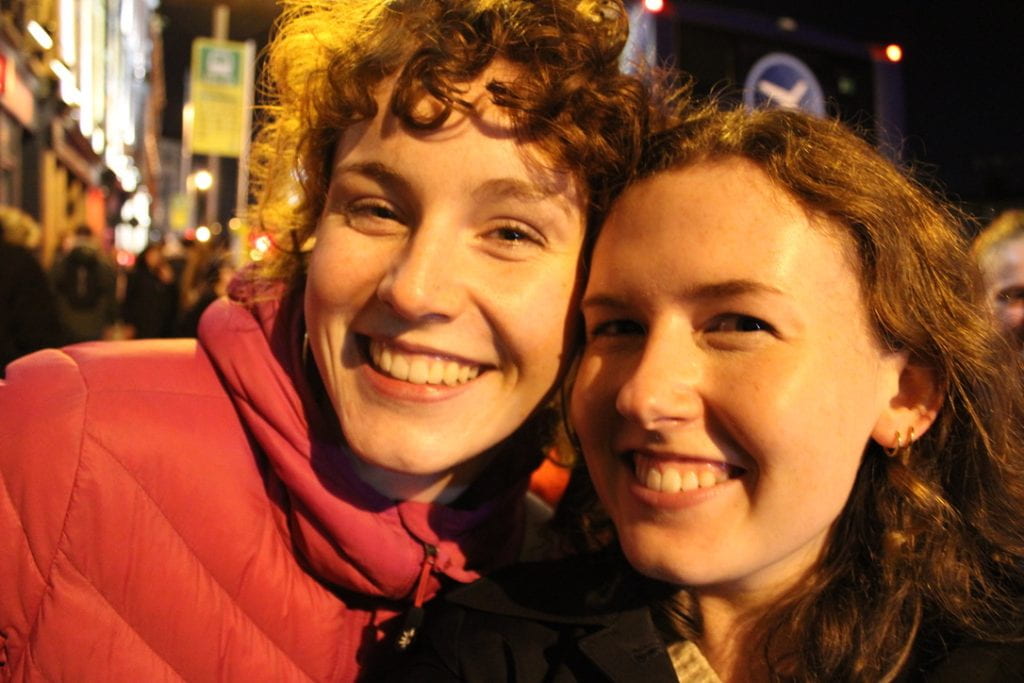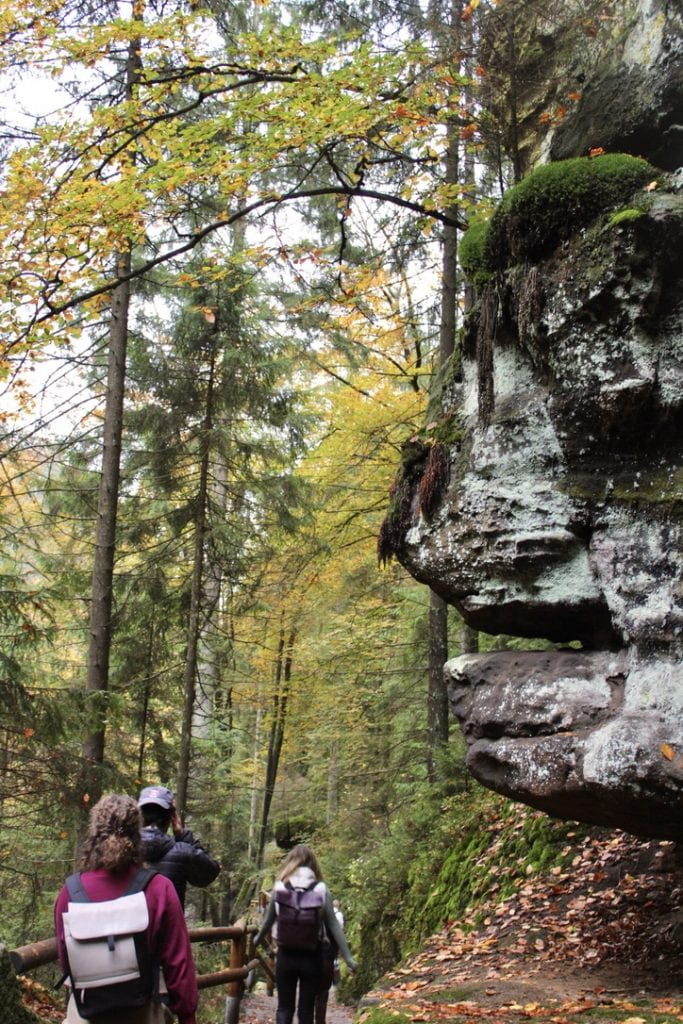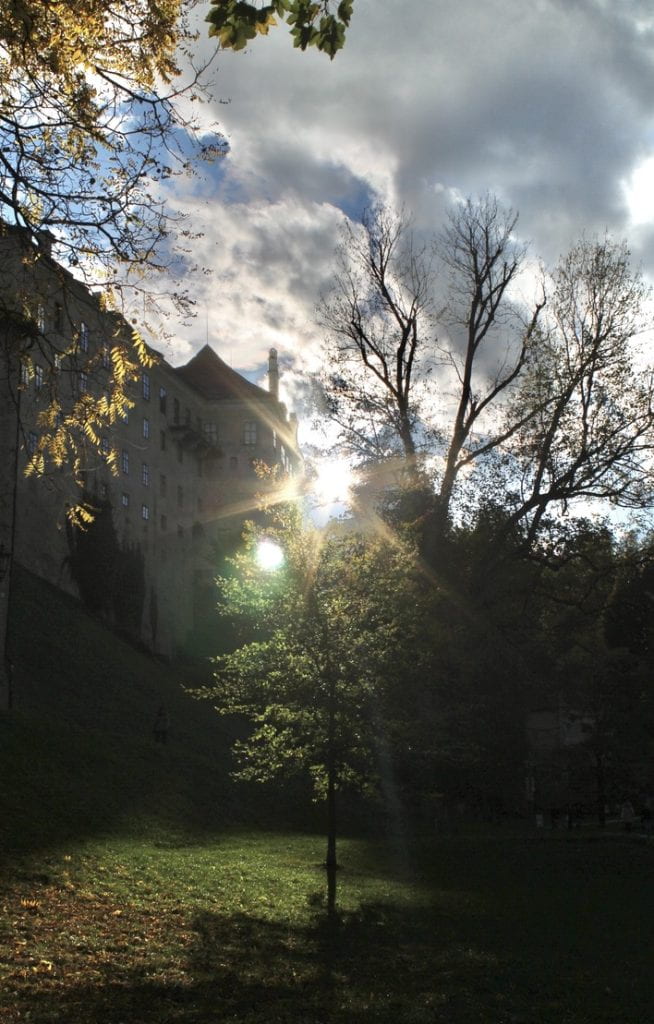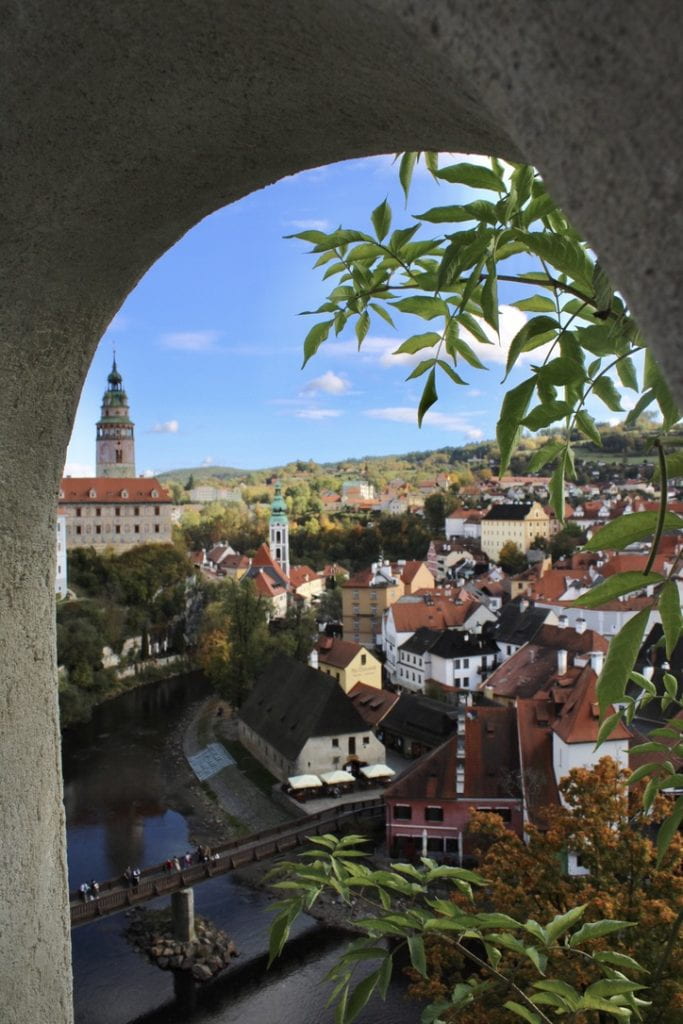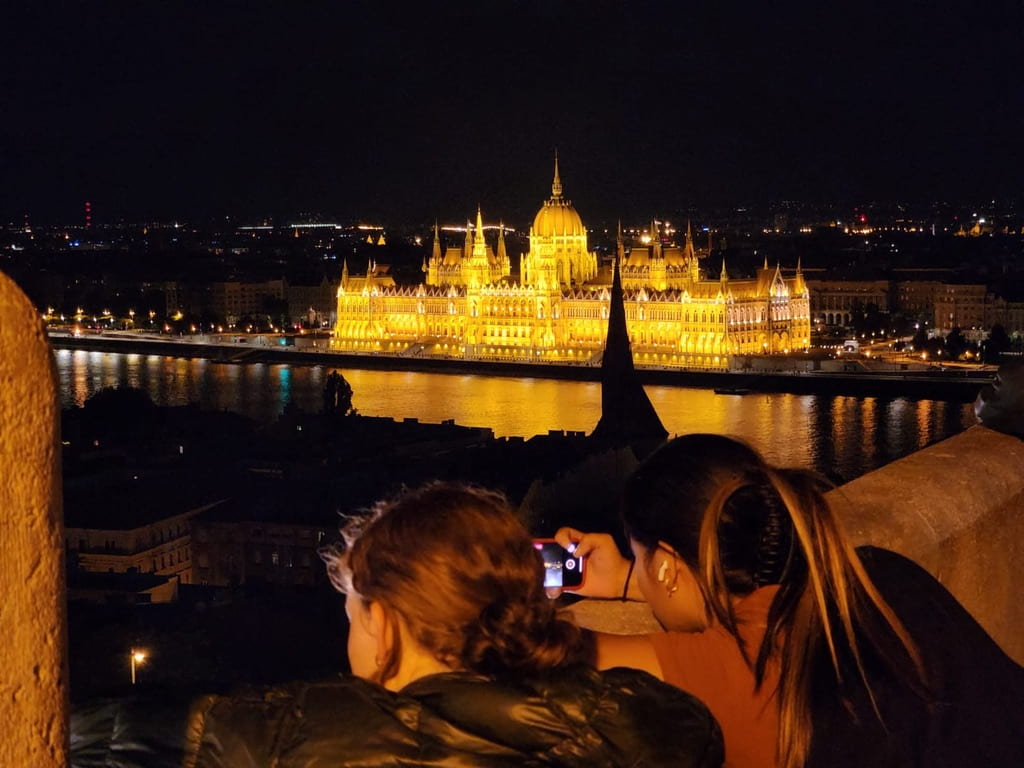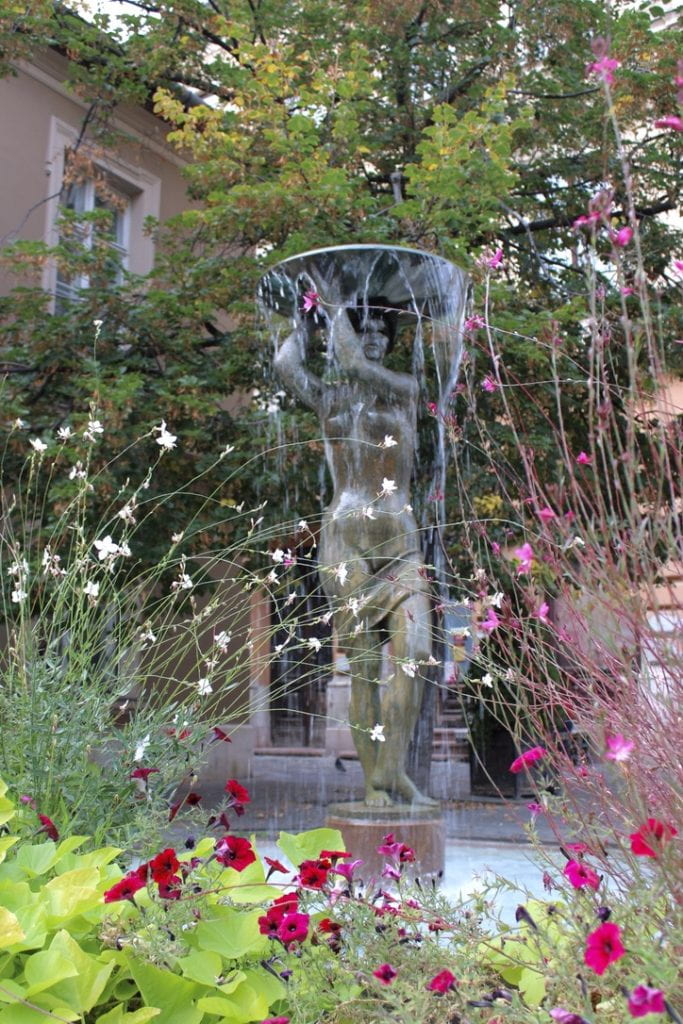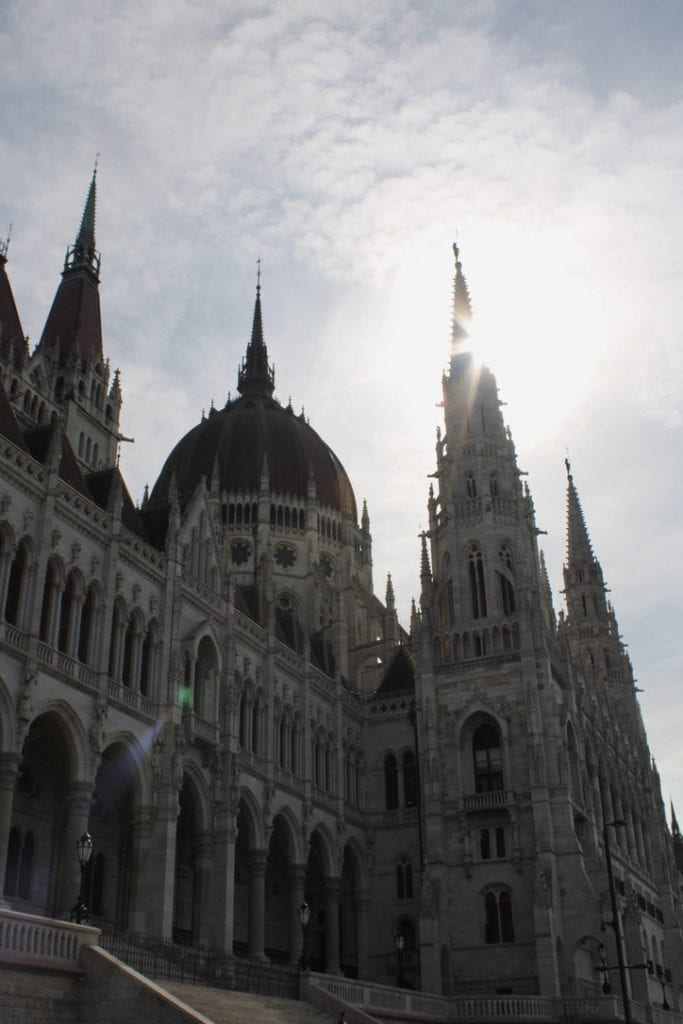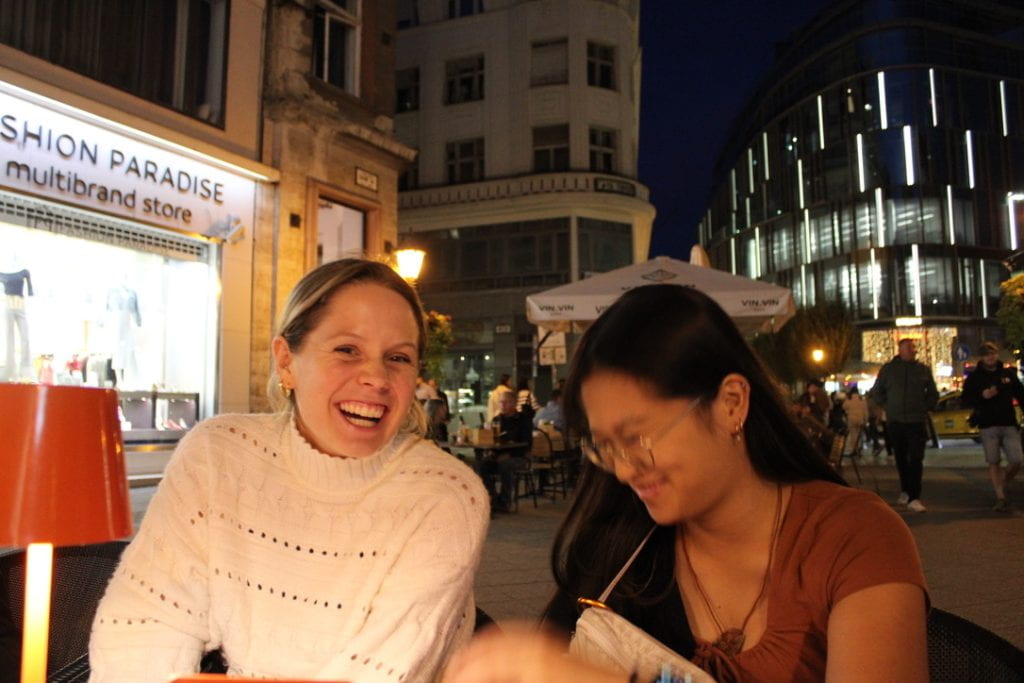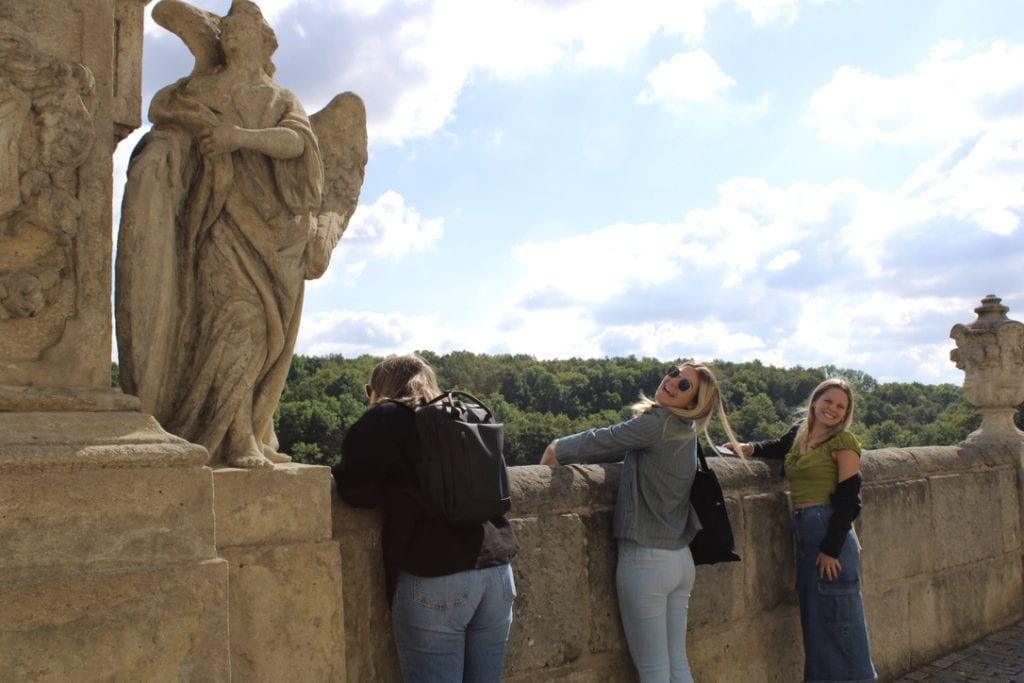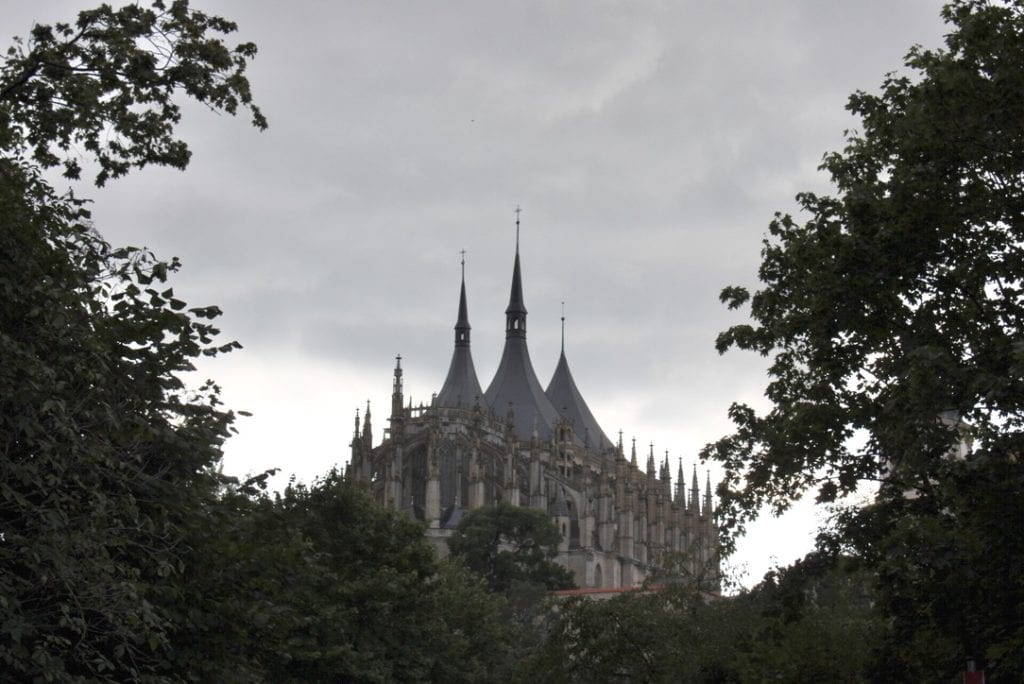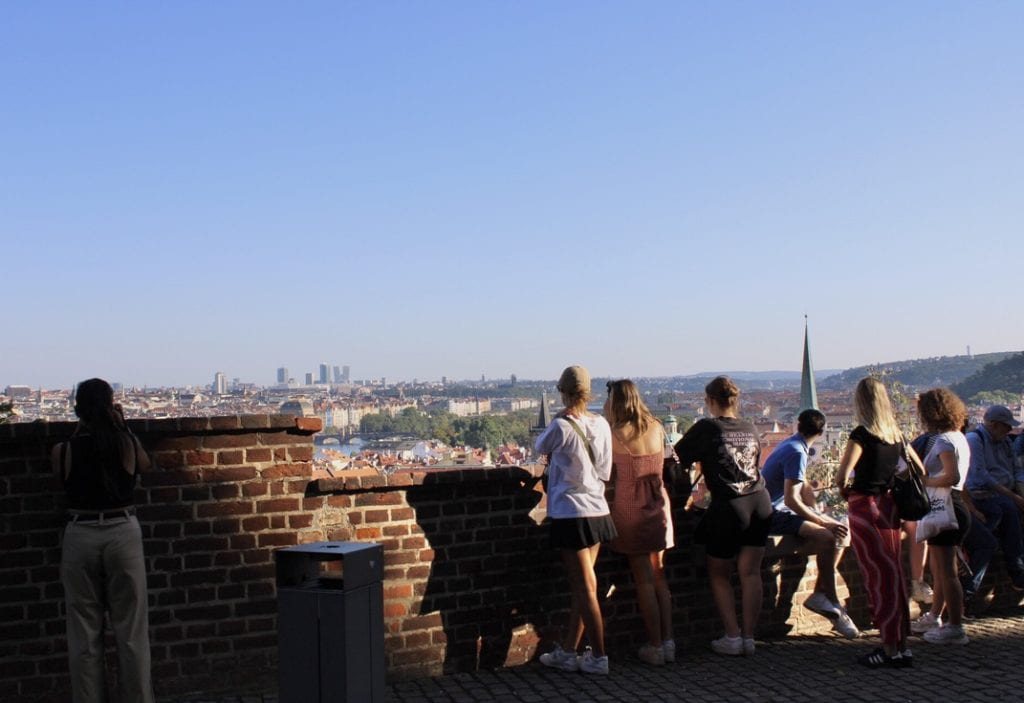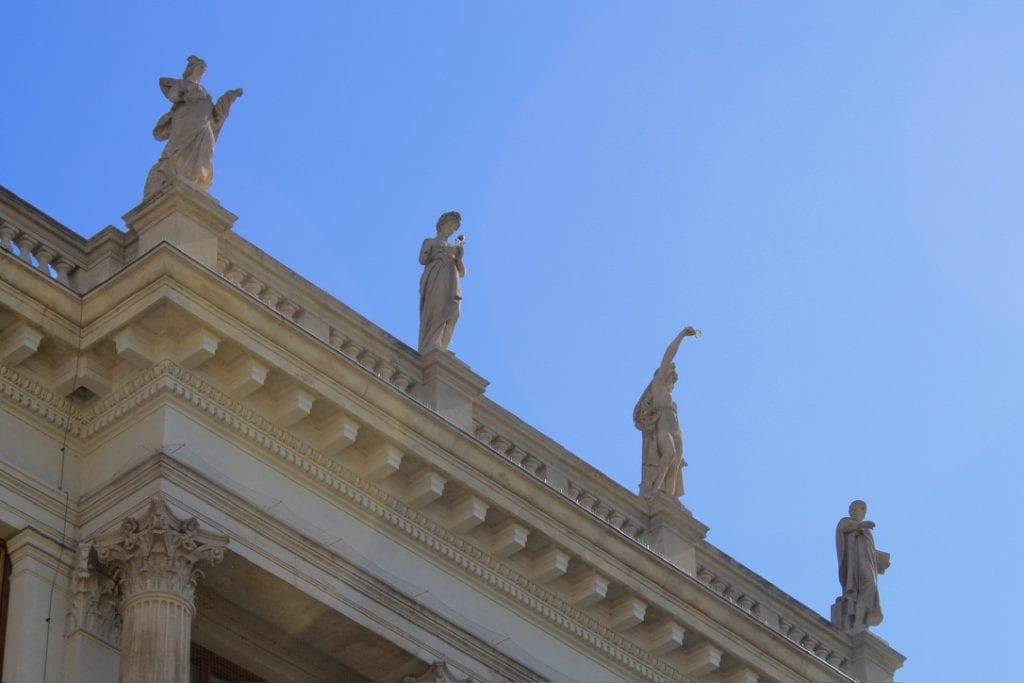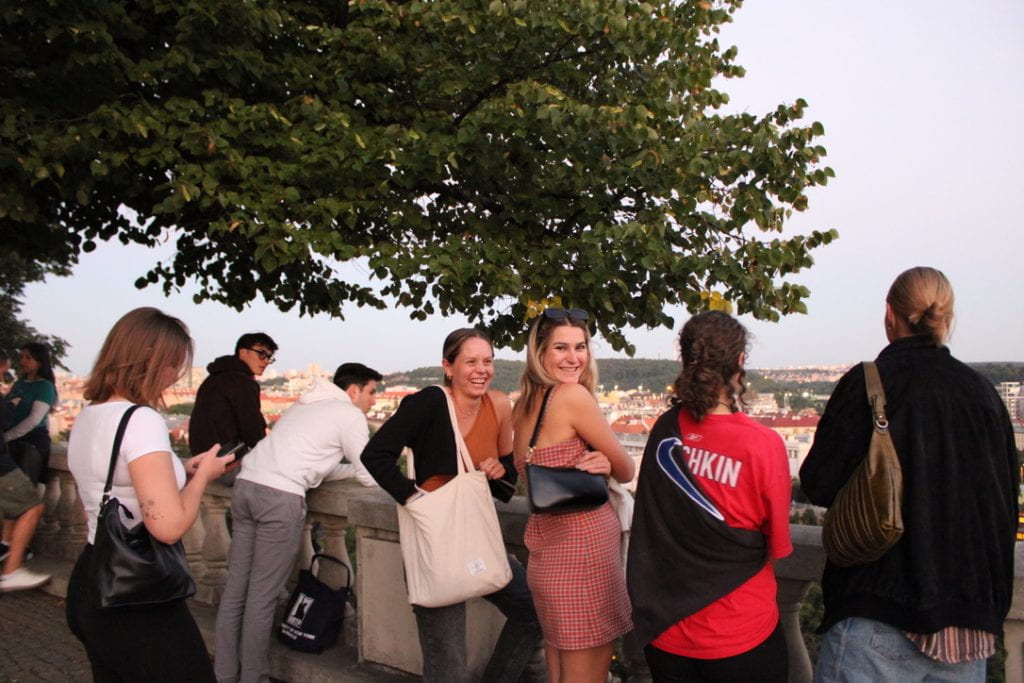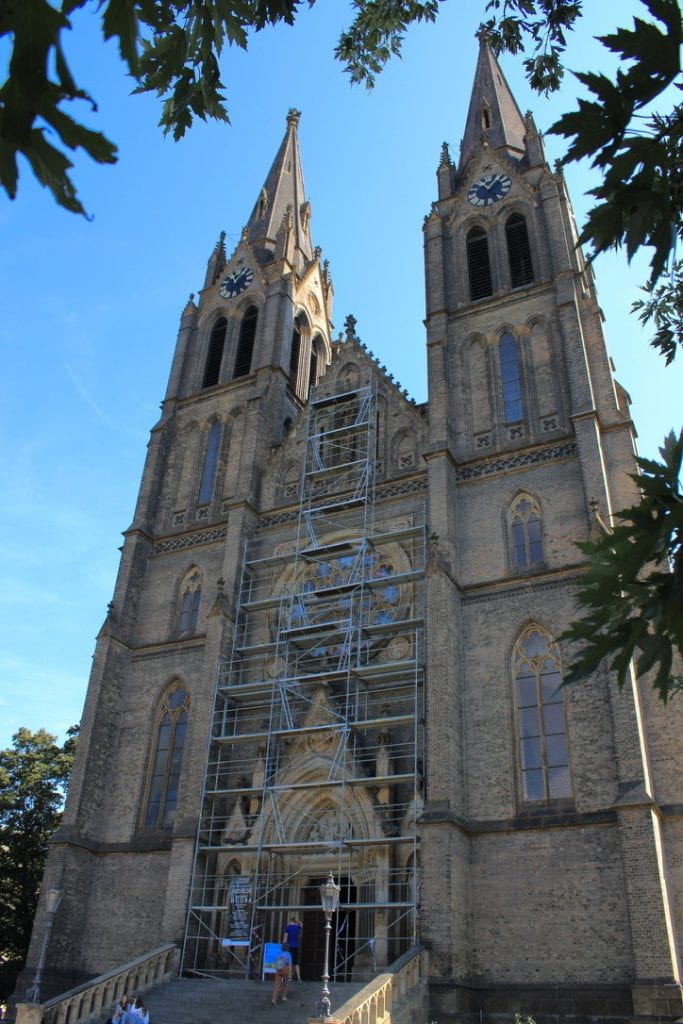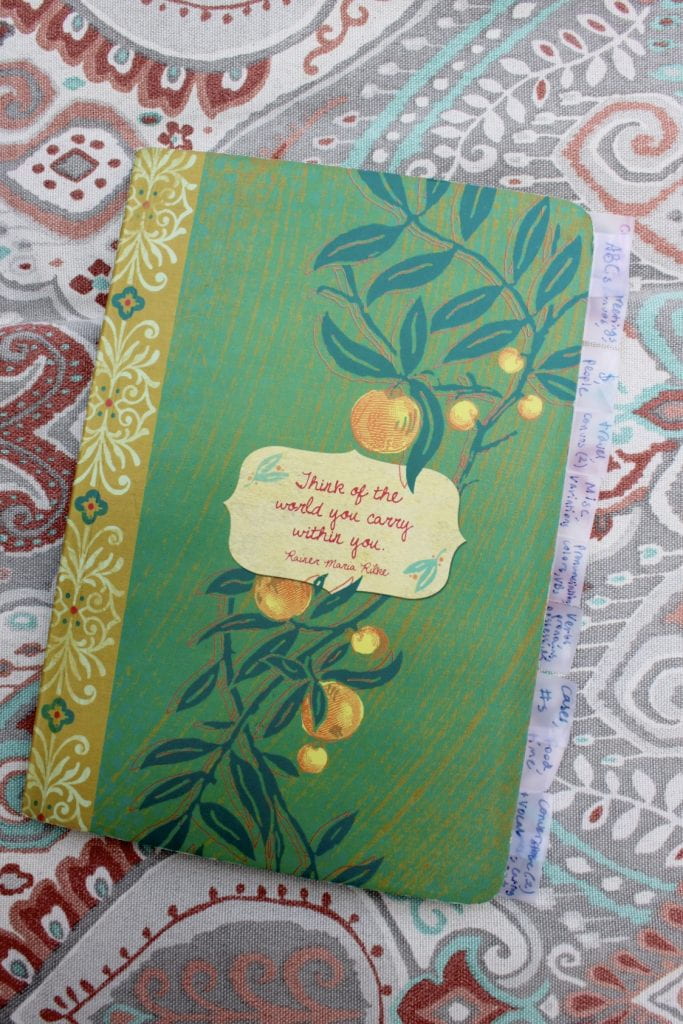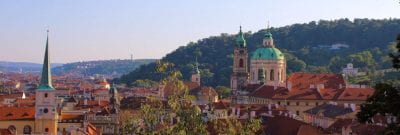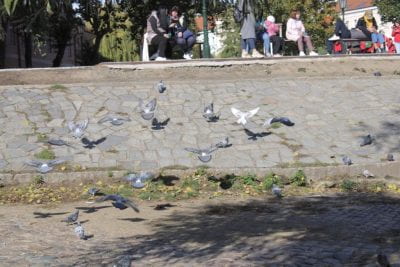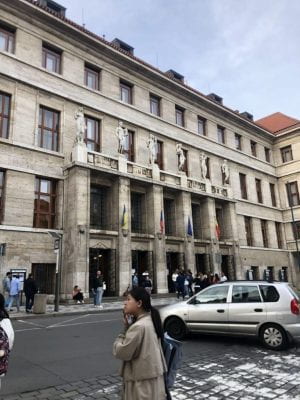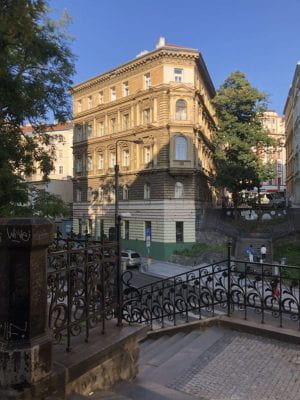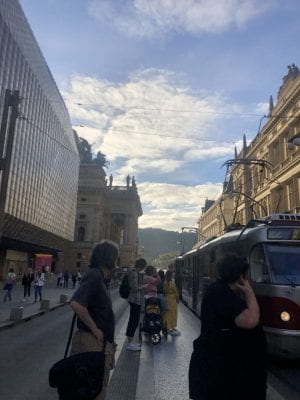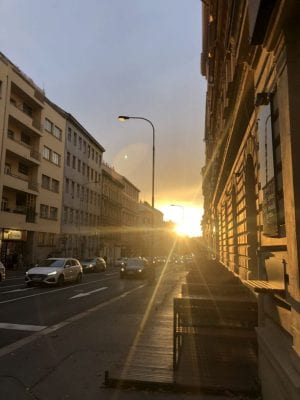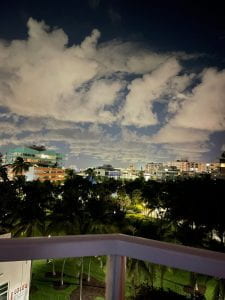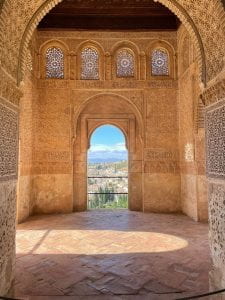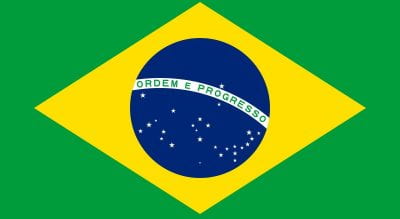¡Hola! Today I am going to share what a “day in the life” entails in San José, Costa Rica, based on my experiences thus far. I am a month into my study abroad program and I’ve settled into a good routine, with some variations from week to week. ¡Empezamos!
I usually wake up with the sun streaming through my bedroom curtains around 6:30am. I might lounge around and slowly get ready, or, sometimes I go for a walk at Parque La Paz (Peace Park) which is 15 minutes away from my home stay.

7:50am – When I return from my walk, my mamá tica has a beautiful breakfast prepared. Here is a traditional plate of gallo pinto (rice, beans, cilantro), scrambled eggs, and yucca (cassava). Coffee is always fresh and absolutely delicious! There is also a side of fresh fruit, usually plátanos (bananas), fresas (strawberries) and papaya. ¡Buen provecho!

After breakfast I head to school around 8:30am with my housemate Clarissa. On my way to school, I always hear the chitter-chatter of birds, the rush of nearby traffic and casual conversations in Spanish from the neighbors that I pass on the sidewalks. I smell the wafting aroma of freshly baked bread as I pass the panadería, contrasted with stench of animal feces on the sidewalk (so great!). Even though I’ve been here for several weeks and I’ve adjusted to this new lifestyle, I try to remind myself of how incredible it is to be walking around in a new city and seeing new sights everyday.

I start my first (and only!) class at 9am, which is Advanced Spanish Grammar and Conversation. It’s a small class of only 8 people, but everyone is friendly and I like our dynamic. Everyday, we work on grammar exercises from our textbook, give oral presentations, group projects, and recently, a field trip to the former capital of Costa Rica: Cartago.
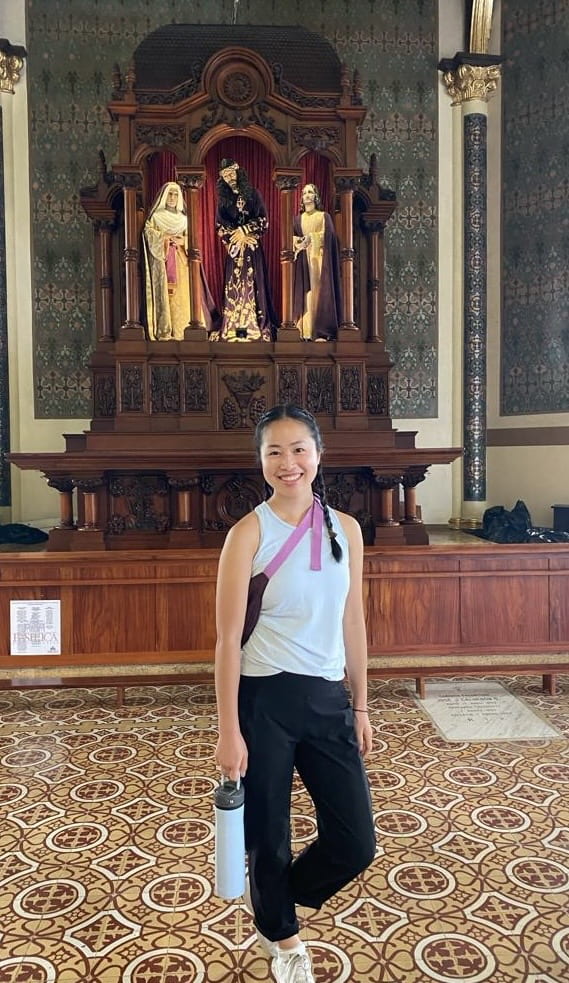
After class, sometimes I’ll go home to eat lunch or stay on campus to eat with friends. There are multiple favorite places when it comes to dining out. The university’s cafeteria is pretty convenient and not too expensive (about $6 per meal), and is always packed full of students trying to squeeze in lunch before dashing off to their next class. I’ve visited other little restaurants in barrio Zapote, including Pana’s Food (a fun combo of both Venezuelan dishes and sushi), and Le Rendez-vous (French pastries and lunch items). I love to explore new food places with friends. Since today was my last Spanish class, my professor and classmates went to Le Rendez-vous after our final presentation to enjoy some pastries.
In the afternoon, I usually return to my home stay to relax and catch up on assignments. Sometimes I sit outside on the patio and listen to the birds and distant traffic. It’s a pretty relaxed ambience!

In the evenings, San José becomes alive with bright lights, upbeat music and busy crowds. A few weeks ago, my friends and I attended some on-campus events, such as La Noche de Arte (art-making), Karaoke Latino, and El Festival de Colores (Festival of Colors). In addition, I’ve attended a few dance classes and learned the bachata and salsa. These events through the university provide the opportunity to meet new people, which I’ve enjoyed. There are few upcoming events through ISA (my program provider) which will allow for more community engagement. For example, I look forward to TINGO (Tico Bingo) and the language exchange with ticos. I’m excited for service-learning to start next week, as well!
One thing that has surprised me is how challenging it has been to socialize with local students. Even though everyone is attending the same school, the study abroad students do not have classes with local students. It can be hard sometimes to approach someone you don’t know and initiate a conversation, especially in Spanish. Luckily, I’ve had several encounters with local students so far. For example, Clarissa had befriended some local students in the lunch line, so my friends and I had lunch with three ticas and we became friends.
I’m becoming more comfortable with interacting with ticos and understanding conversational Spanish. Not everyday is perfect, my progress isn’t linear, and some days my brain is tired and defaults to speaking and thinking in English. It’s hard to comprehend fluent speech and form my own coherent sentences sometimes. My goal is to become fluent in Spanish and understand more about Costa Rican culture. Everyday is different, and I am trying to be patient with myself. I feel like I’m making progress with my Spanish, little by little.
To close out, one piece of advice I have for students studying abroad is rest when needed and focus on one day at a time. When studying abroad, there are many events and experiences that may cause you to feel overwhelmed; between taking classes, trying to speak/learn/understand a new language, going on excursions, dealing with culture shock, and more, it’s likely you’ll feel overstimulated and exhausted at the same time. Therefore, I think it’s important to focus on one thing at a time. I know this is easier said than done, but learning to be present in each situation and taking each day as it comes may reduce feelings of stress and allow to appreciate your study abroad experience more. Take the time to rest when necessary and be kind to yourself, because your well-being matters.
Anyway, thanks for reading! Feel free to comment or ask a question below. Please share any updates in your life, so we can connect.
Saludos, Anna
